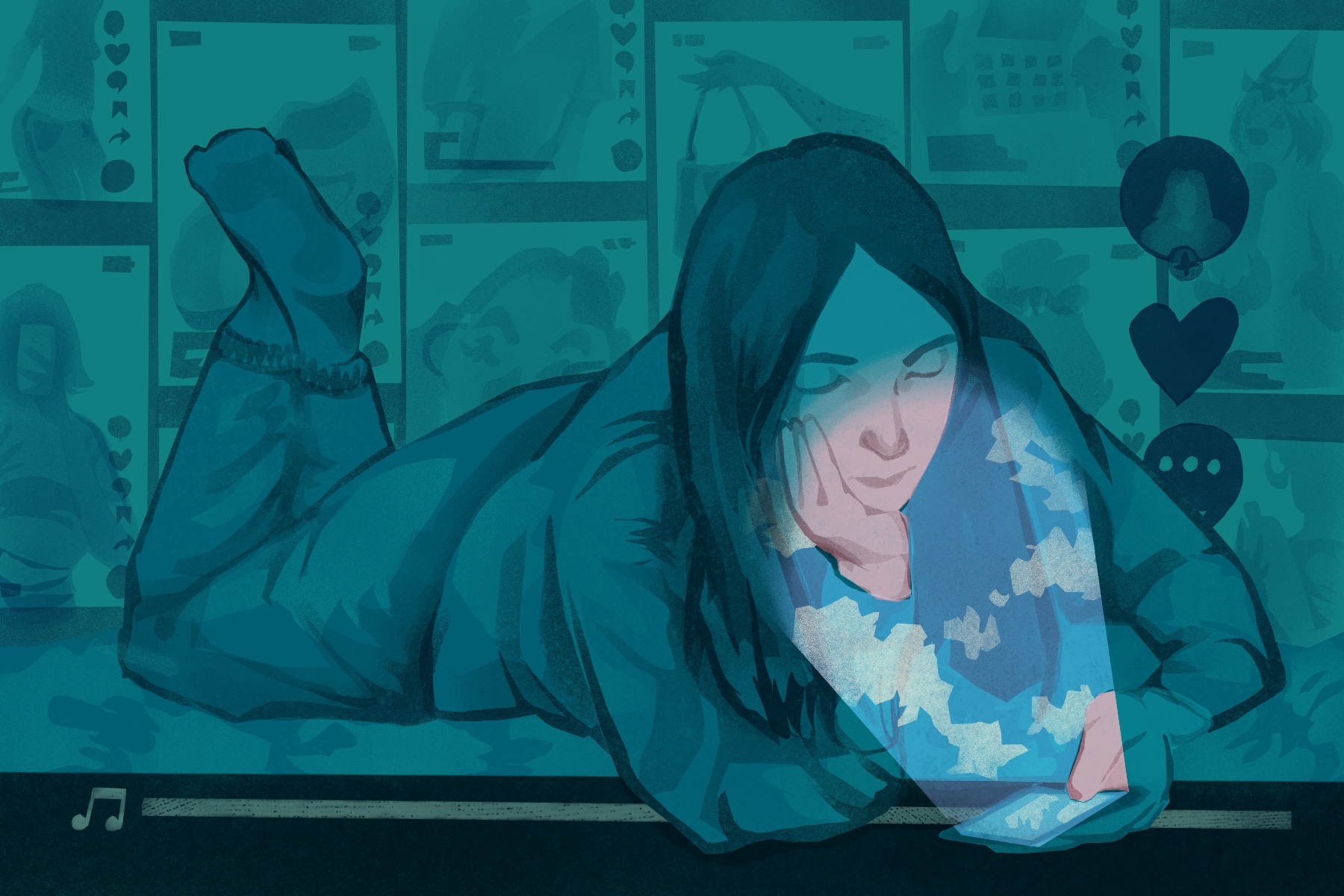A trend by the name of corecore has recently graced many TikTok for-you pages, but what exactly is it? One corecore video may show movie clips that are poorly spliced-together. Another might show aerial shots of city traffic and people walking down the street to the tune of classical music. Still, others mimic the user experience by scrolling through an imaginary for-you page at lightning speed. For all this variety, many of the posts under the corecore hashtag seem to circle around an idea just beyond comprehension. Maybe an attempt to satirize online habits, maybe a form of social commentary, maybe just poorly edited videos.
The term corecore was first seen on Tumblr in 2020 with no apparent connection to the current trend. On TikTok, the term is primarily reserved for grim-toned edits that point a spotlight at online behaviors. It would be no stretch to call them art. Many videos are rife with carefully selected orchestral music and seemingly unrelated clips of videos that create a cohesive sense of despair in their viewers. Corecore’s appeal is resistant to language but tugs at its viewers nonetheless, be it through nostalgia or nihilism. Creators may stitch together clips from old movies with speeches on the climate crisis, interspersed with brief interjections of old TikTok dances. The edits ping between fun and serious, and their juxtaposition makes for a bleak look at the viewer’s world. Many videos involve themes of anti-capitalism, environmentalism and feminism.
A trend so widespread and self-aware needs the perfect name to match. Core is the new chic for Gen Z, and in a literal sense — the name corecore pokes fun at this generation’s overuse of the -core suffix to identify new aesthetics. From cottage-core to frog-core, new aesthetics are being created ad nauseam, and many have short shelf lives. With so much emphasis on one’s online presence, there comes a desire for individuality and uniqueness. This is evident in the very nature of TikTok’s algorithm– the app curates highly individual “for-you” pages for each of its users. The algorithm takes into consideration a user’s likes, accounts they follow and the content they engage with to create an endless stream of highly personalized videos. Consequently, this algorithm creates an echo chamber that contributes to the consistent creation of new aesthetics. Users are force-fed their favorite content until it loses its novelty and runs the risk of becoming basic. And to Gen Z, being basic is the ultimate aesthetic faux pas.
This nihilistic new anti-trend is as unsurprising in its timing. The onset of COVID increased internet and social media usage exponentially, as it was the only means of communication most had at that time. Disillusionment and nihilism among teens predates the internet itself, so naturally a generation recently confined to their homes turned to social media to vent. Many teens feel that they aren’t able to live out the most exciting years of their youth. Amidst a dire climate crisis, threats to reproductive rights and the overwhelming pressure to maintain a pristine digital image, teens are channeling their nihilism into art, and corecore is a direct result.
Despite its short lifetime, corecore is already at war with itself. Variety within an aesthetic is to be expected, but in the case of corecore this variety violates its guiding principles. On one hand, corecore is a jaded look at the obsession with online aesthetics. This version defines itself as an anti-trend, and is essentially a more elegant version of shitposting. Others introduce a flood of information and content intended to overwhelm their viewers. These videos argue that users waste their time on things that will ultimately not matter. Other corecore posts overshoot satire and implement what can only be described as an aesthetic in their attempts to differentiate themselves from other posts. Many videos place “vapid” trends alongside social issues, broadcasting a sense of nihilism and hopelessness.
Try as it may, not even corecore is protected from the all-encompassing TikTok algorithm. The slight differences in tone are exploited and funneled into echo chambers, creating oceans between posts that were all once considered corecore. Already one can find rising offshoots of corecore. Hopecore diverges from nihilism entirely, ensuring its viewers that good is out there. Nichetok seems to satirize corecore itself, taking a step back from nihilism to make fake deep edits of movies and shows.
What happens next for corecore? Was it successful? It depends on how one chooses to look at it. As an art form, corecore seems to fail — it is being phased out and has changed meaning before the public reached general consensus on its success. As an anti-trend and commentary on aesthetic, it could be considered the ultimate success. Corecore videos engage and confuse many. They make fun of the overuse of -core as a suffix and then became what they initially abhorred. Most importantly, corecore videos showed the impact that TikTok’s algorithm has on the consumption of content and internet behavior.
The anti-trend that took for-you pages by storm is breaking down, which is the perfect conclusion to its story. As users scroll aimlessly through their for-you pages, they may still come across hastily thrown-together edits of podcasts and clips of news segments. They might continue scrolling, or they might engage. Nonetheless, the remaining vestiges of corecore should be valued, for however long they last.

















